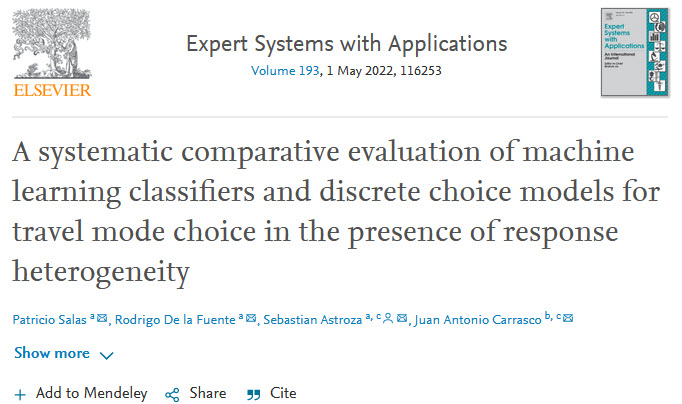PatricioSalasaRodrigoDe la FuenteaSebastianAstrozaacJuan AntonioCarrascobc

Abstract
Discrete choice models has been for decades the most used technique to model travel mode choice, being the multinomial logit (MNL) the most popular model among them. Several versions of the MNL model have been proposed, such as the mixed multinomial logit (MMNL) model which takes into account unobserved taste heterogeneity. On the other hand, machine learning (ML) methods have begun to gain ground in the transportation field, showing a high predictive power that surpasses logit models. Nowadays, most studies comparing machine learning methods and logit models mainly focus on predictive accuracy, while others – to a lesser extent – focus on post-hoc explanation analysis. In this paper, we compare the predictive performance of five machine learning classifiers and the MNL and MMNL models. Also, we shed light on explanation capability by computing the effect of different variables not only on the overall prediction but also on the prediction of different choice alternatives using an agnostic-model method. The different methods are tested based on synthetic datasets with and without taste heterogeneity between decision-maker, showing a reduction of the accuracy gap between discrete choice models and ML methods when taste heterogeneity is present. We also present an empirical application using four mode choice datasets. Our results show that Neural Networks generally perform better than other models in terms of accuracy and interpretation. Results highlight the importance of analyzing the equivalence between the models in order to complement the explanations obtained through the two approaches. Our analysis can be used to support management decision making and to better understand the factors that determine people’s travel behavior.